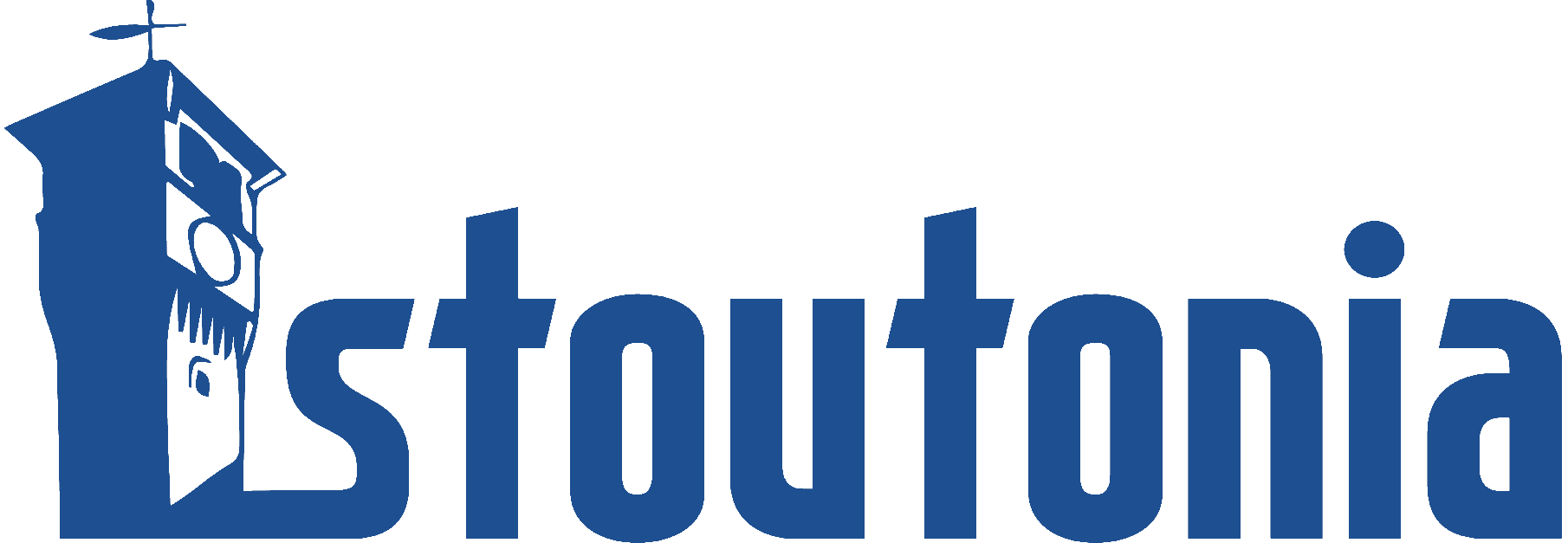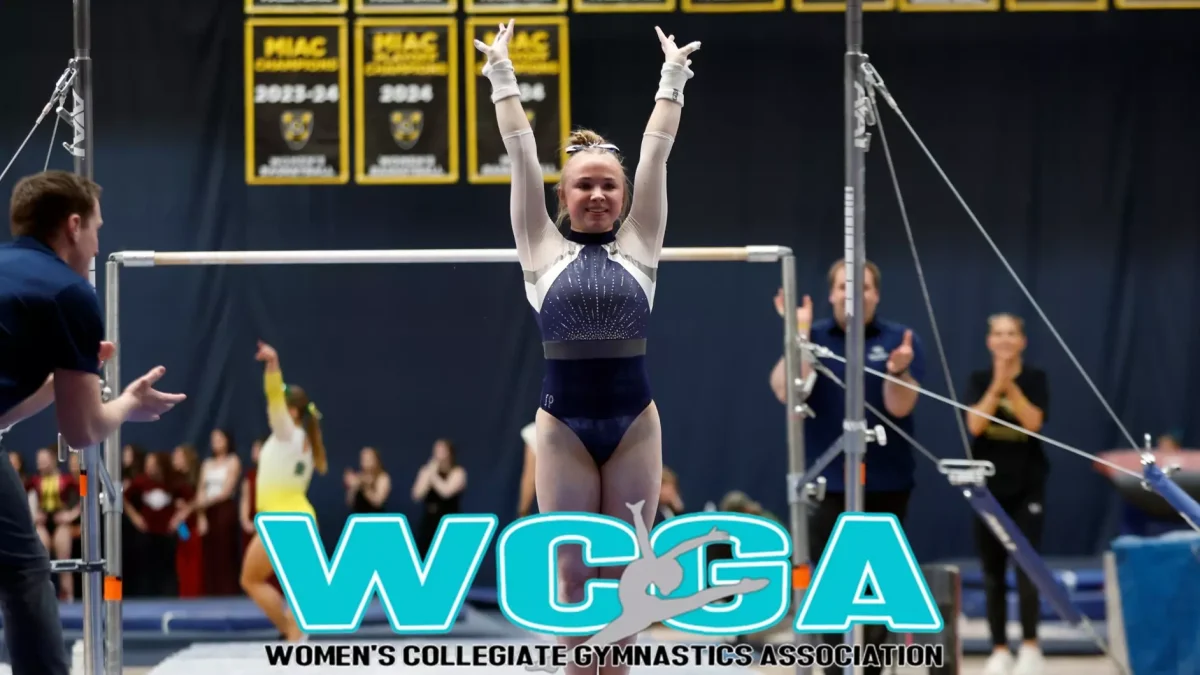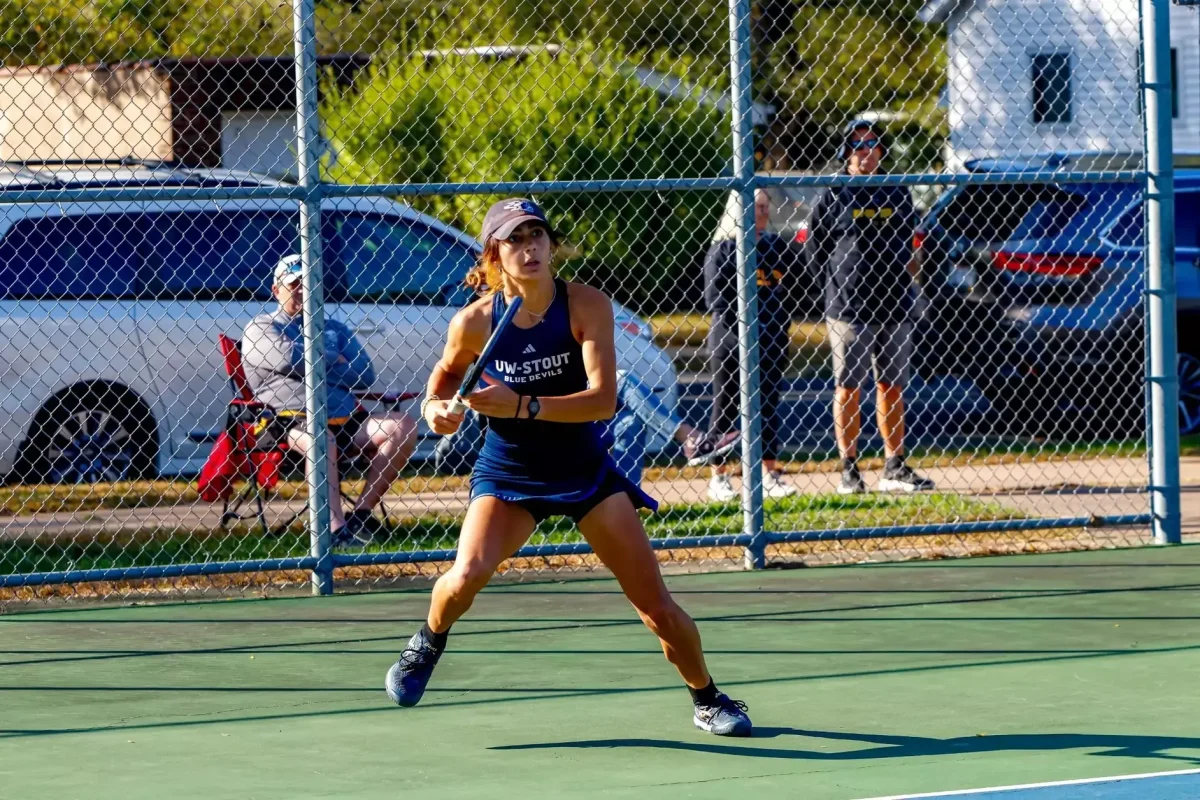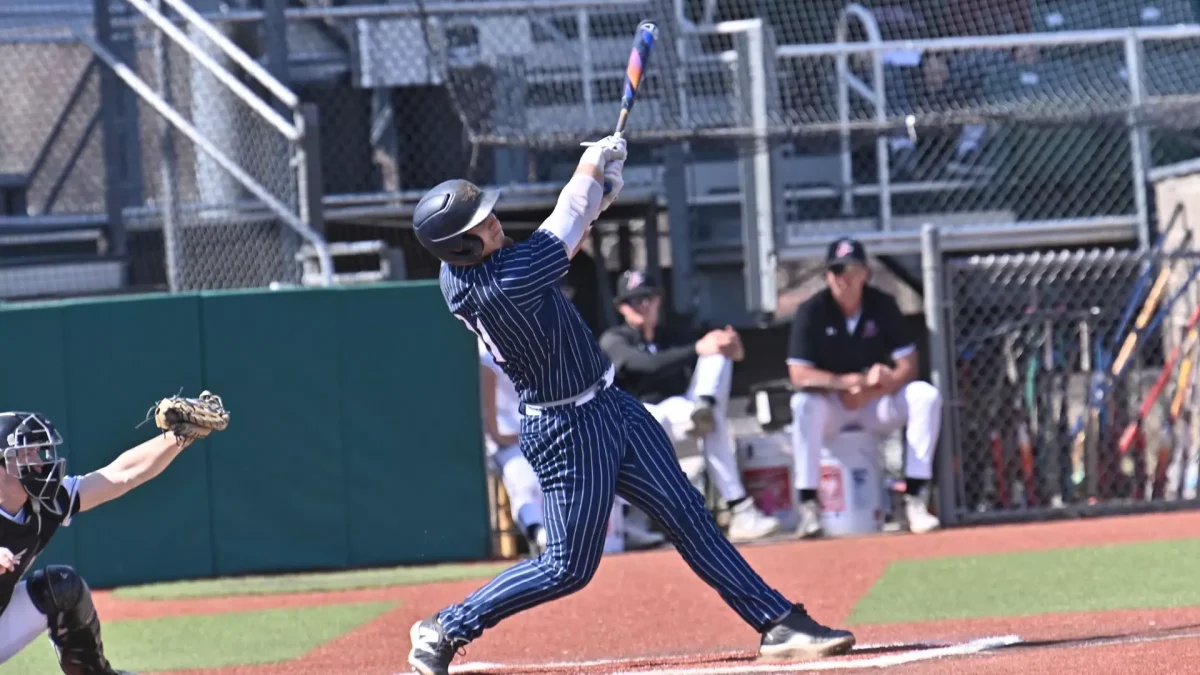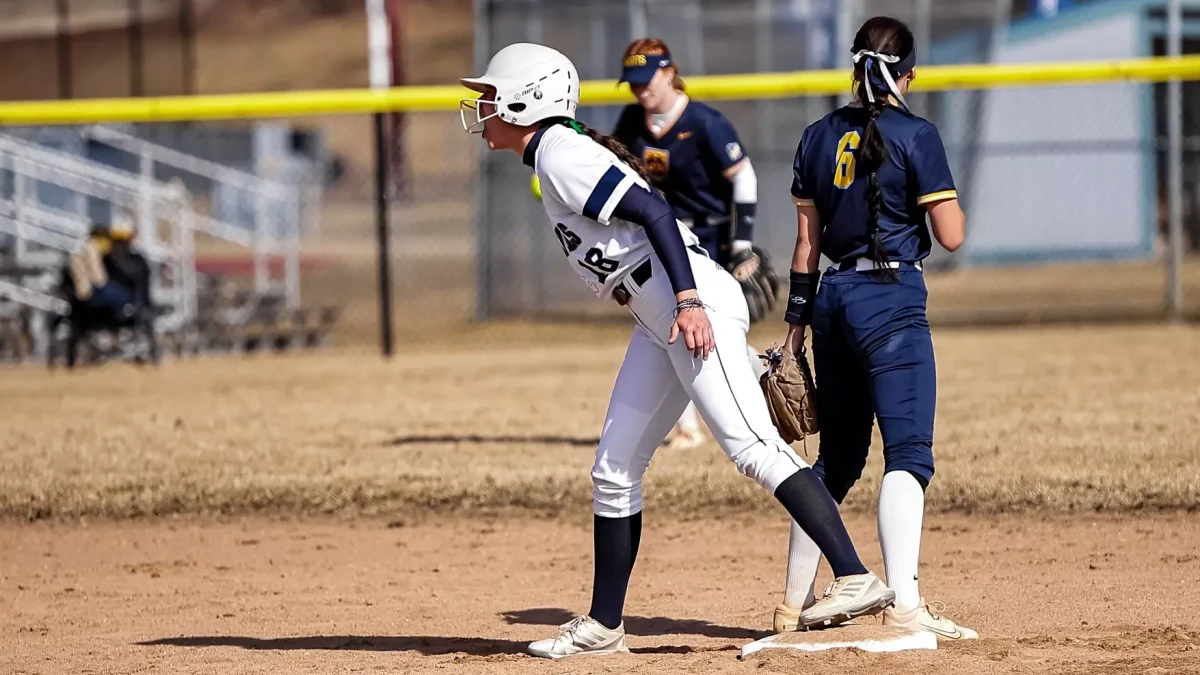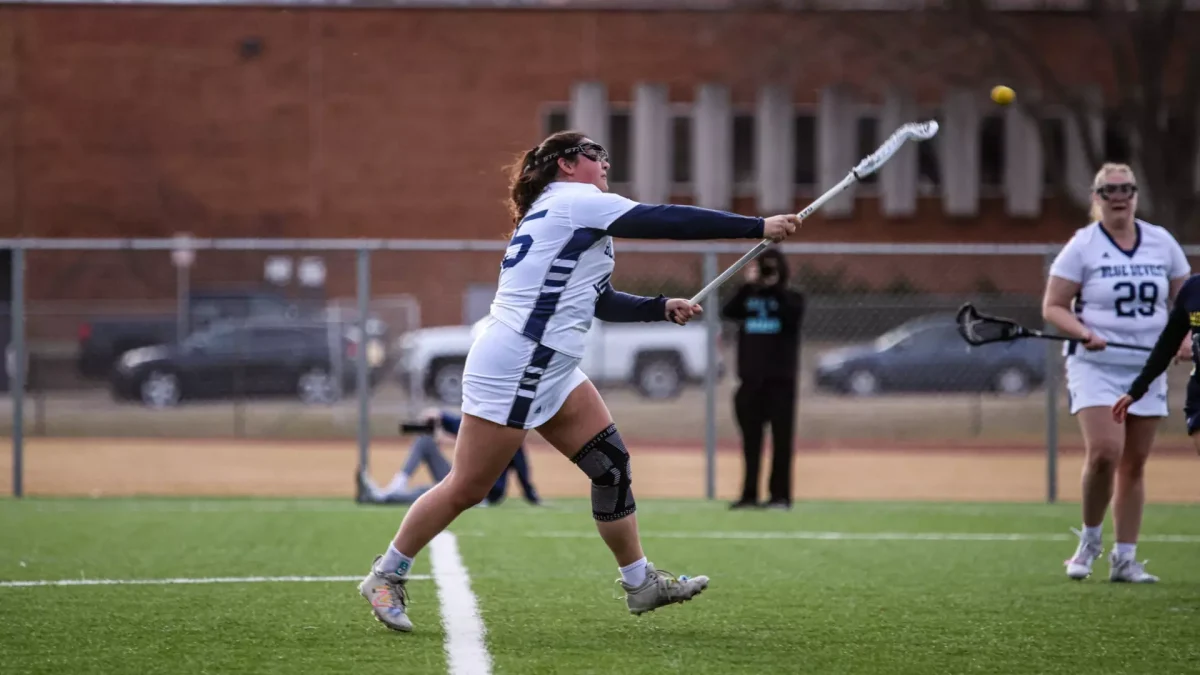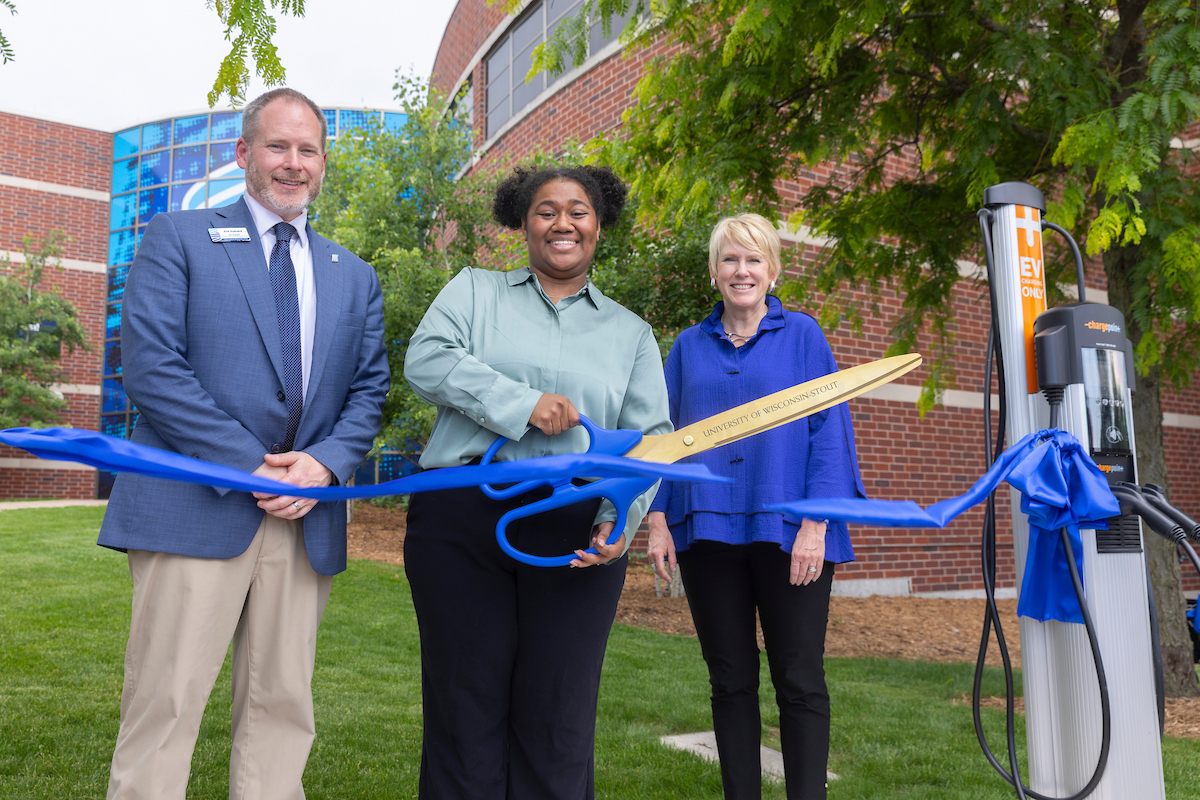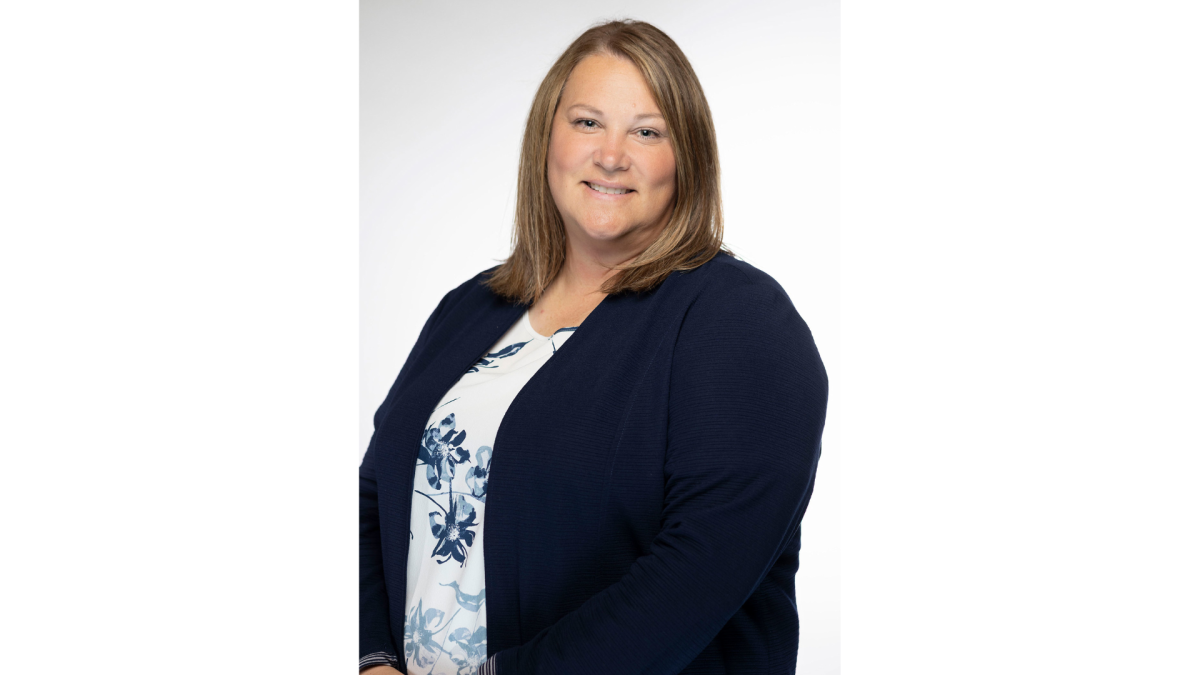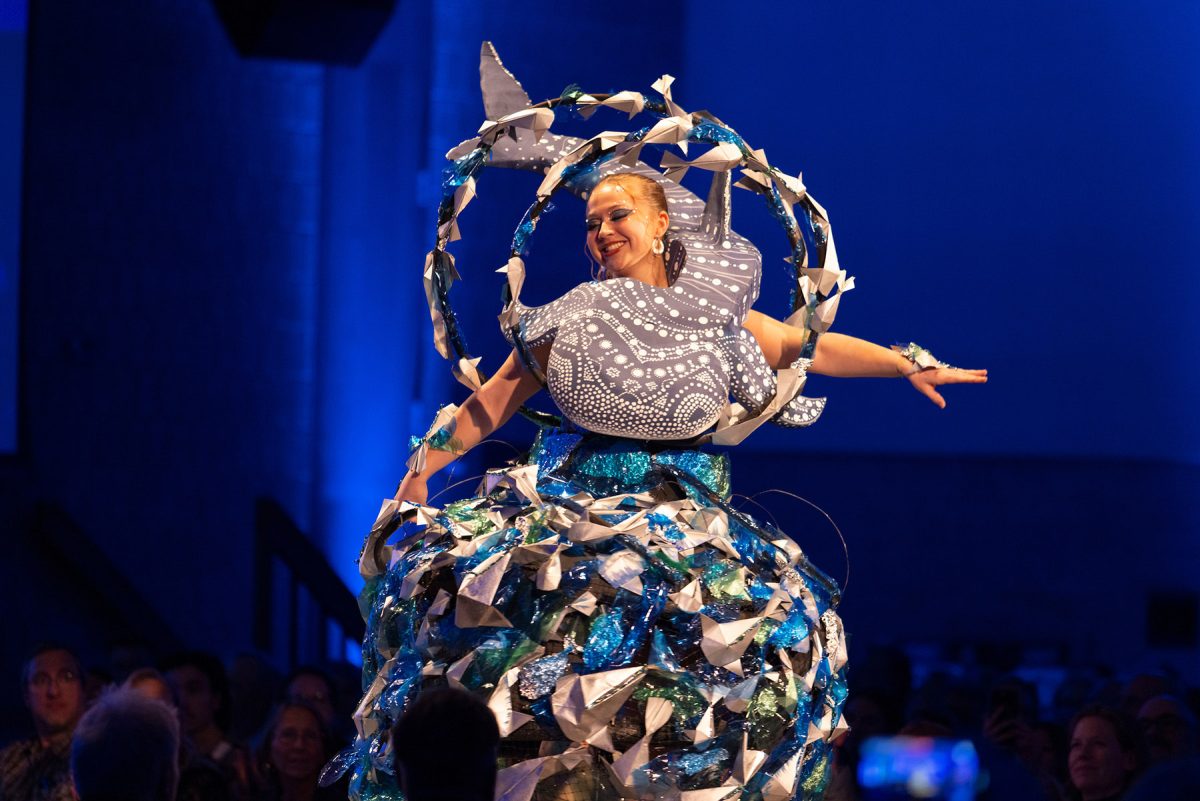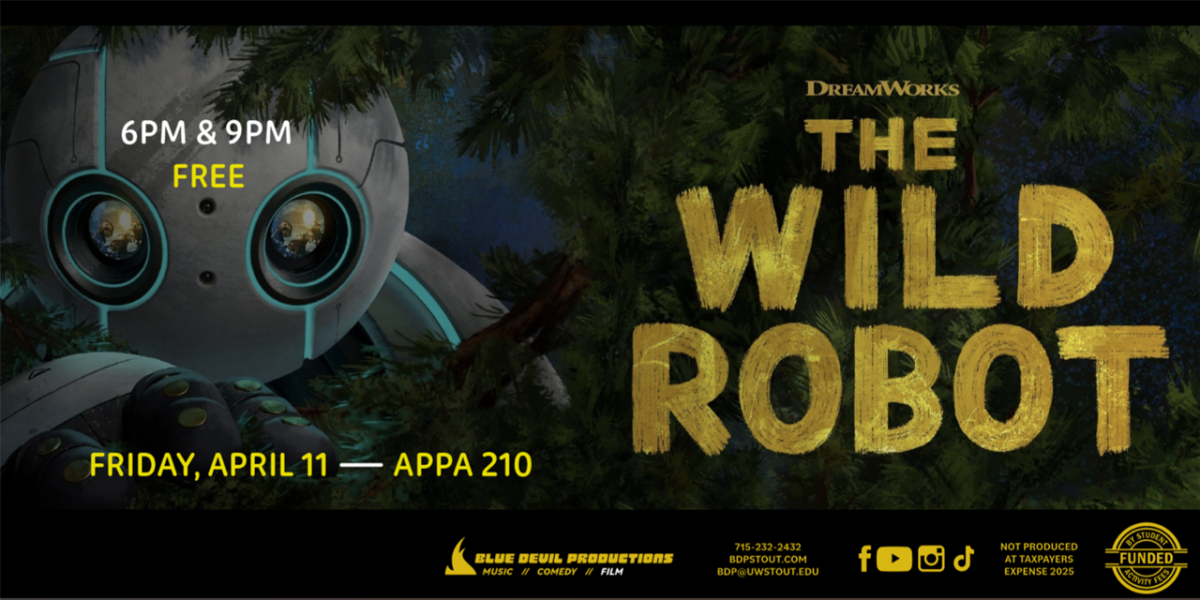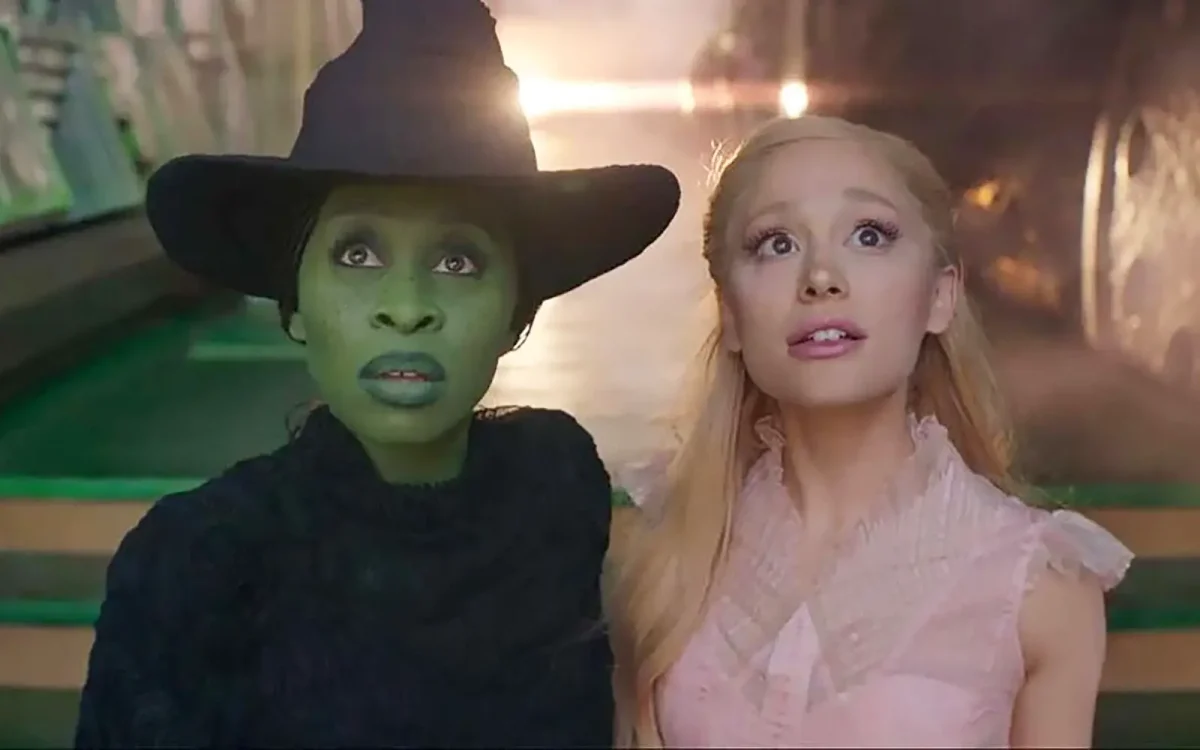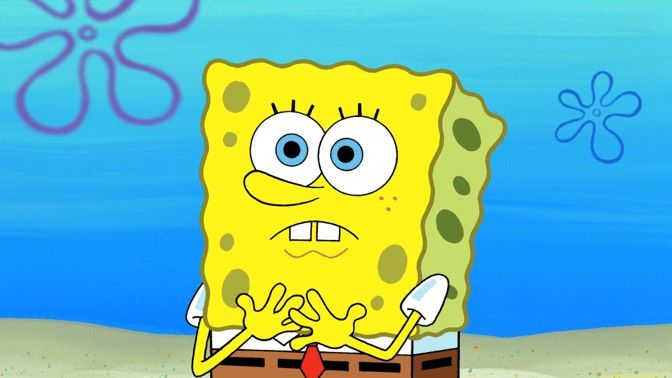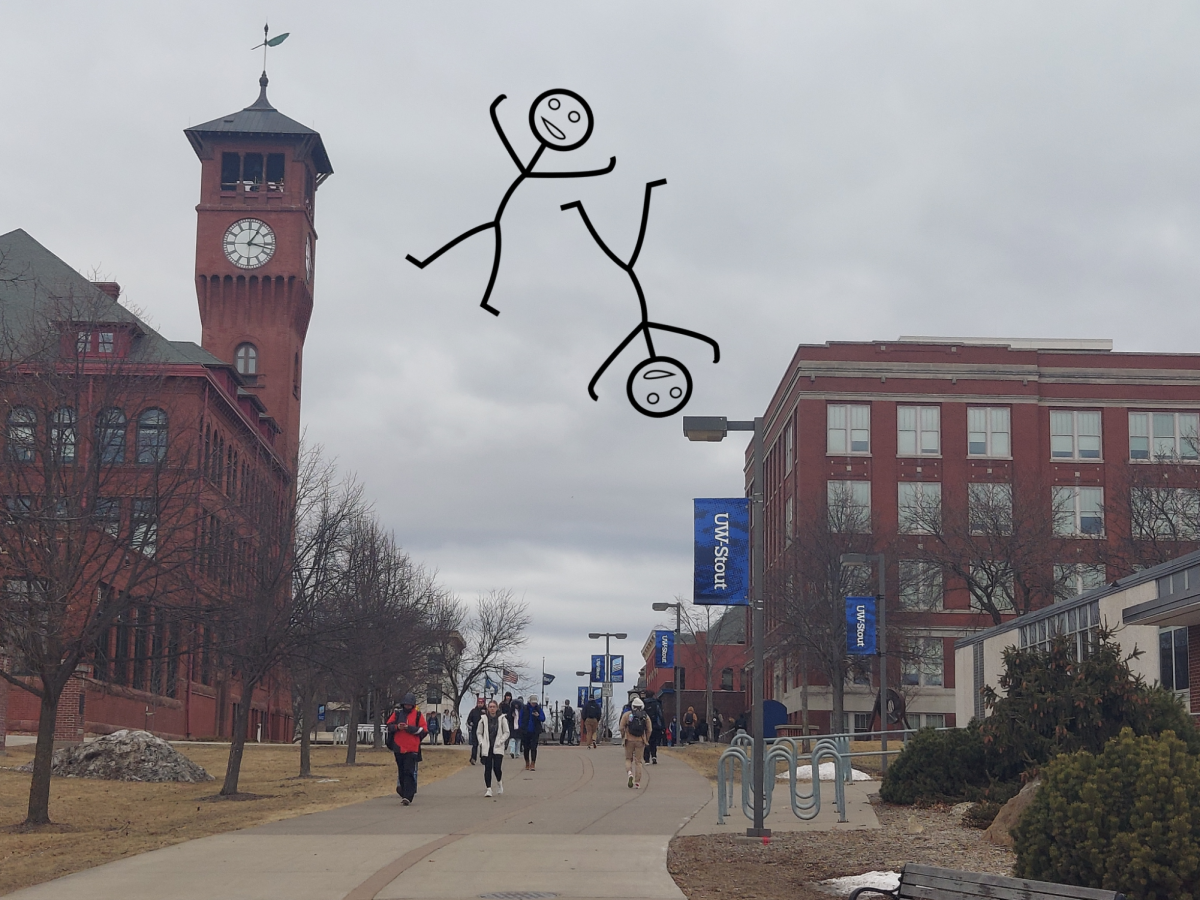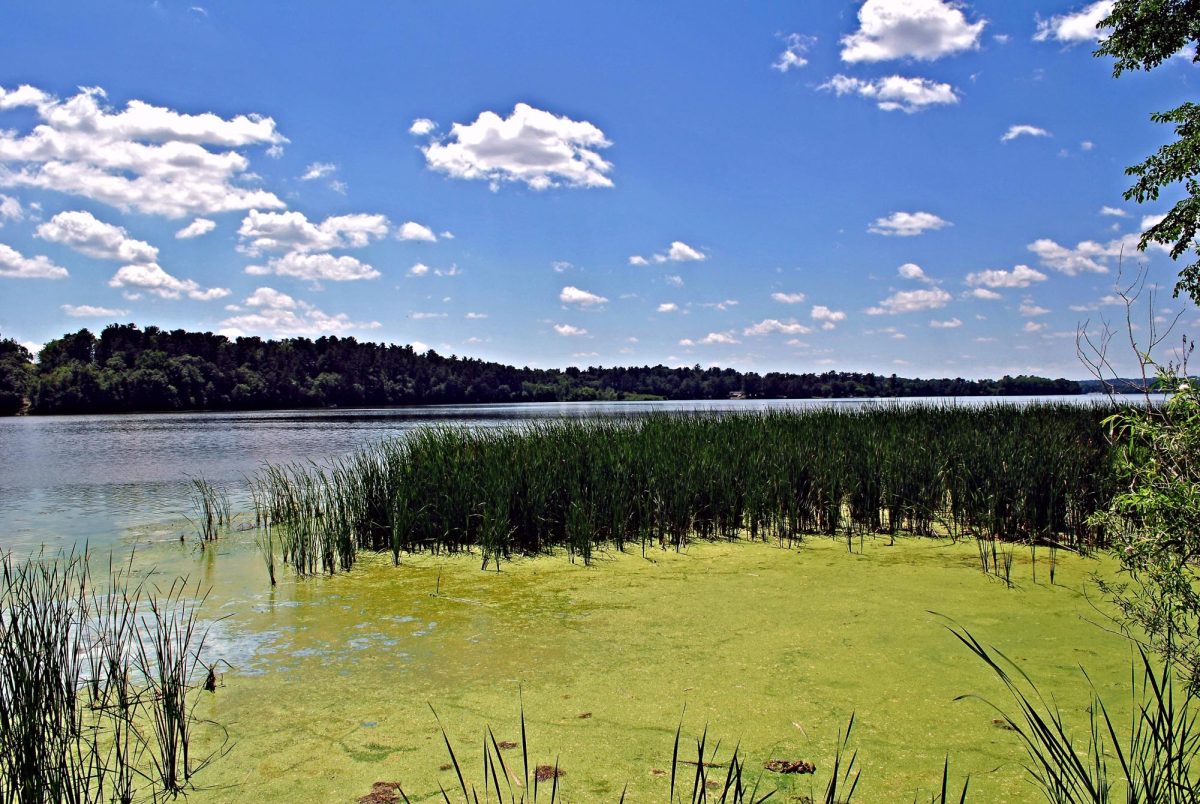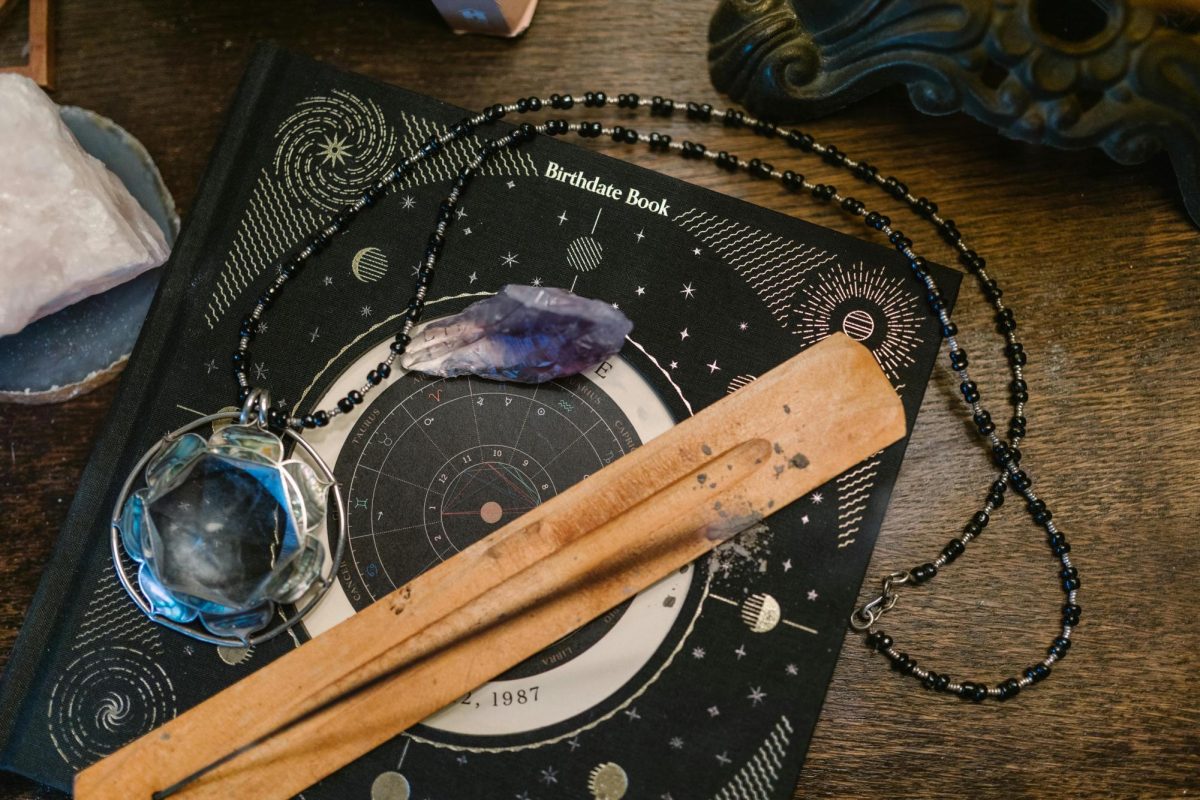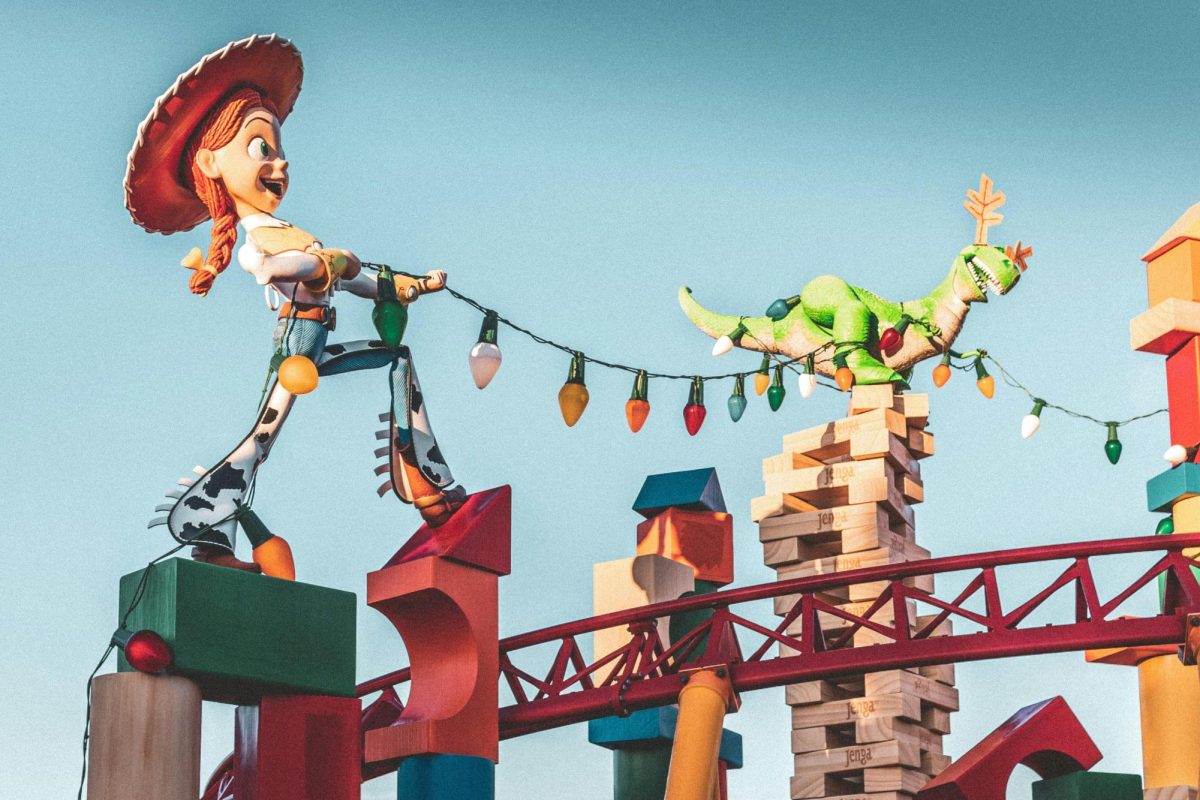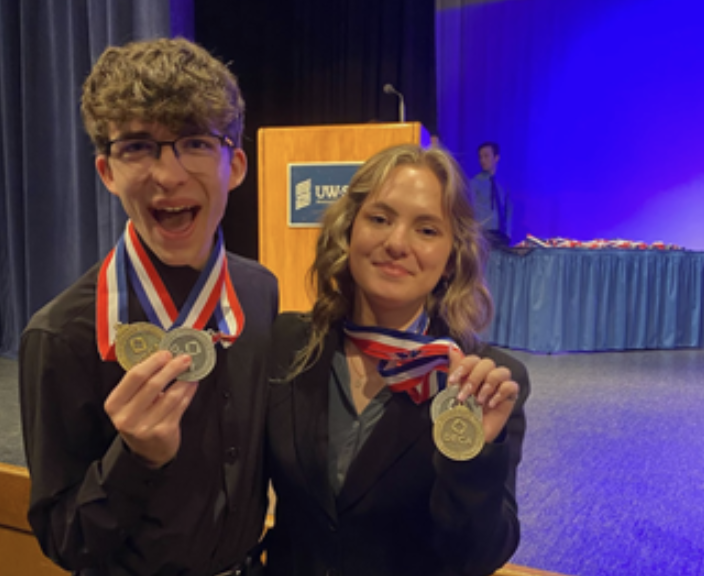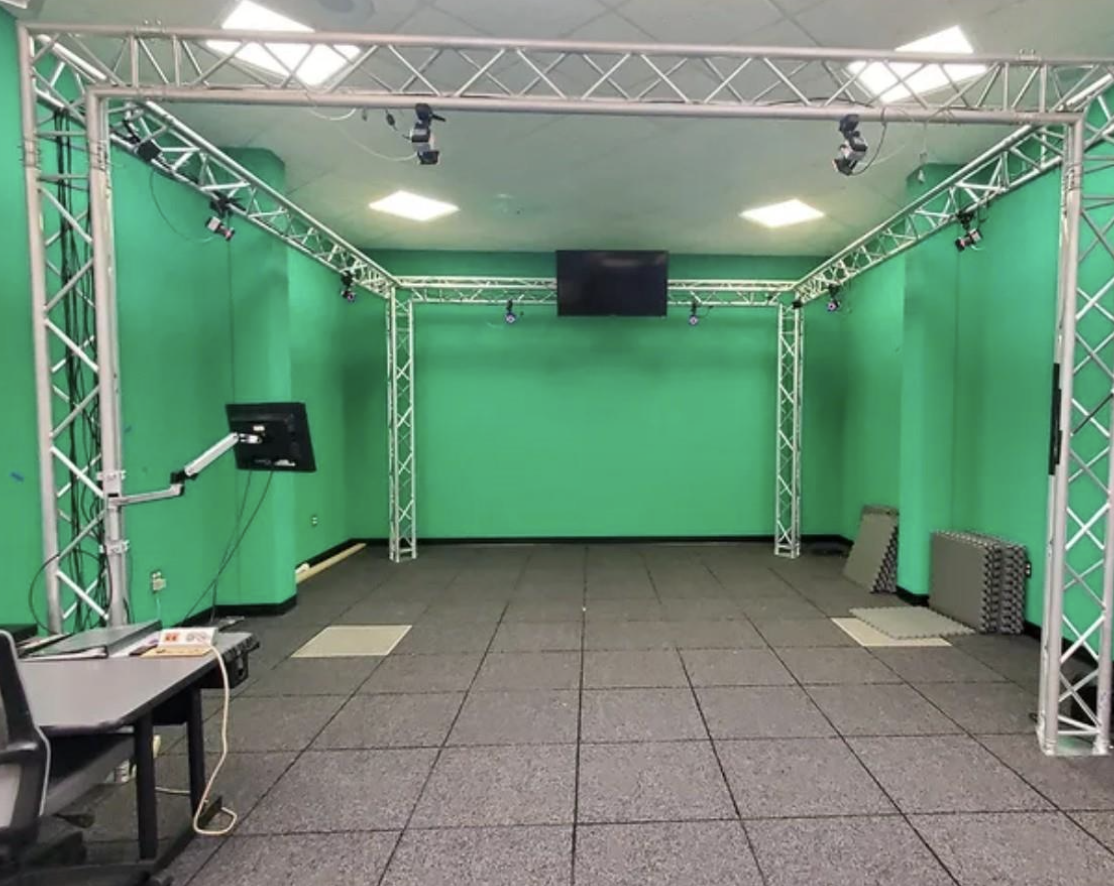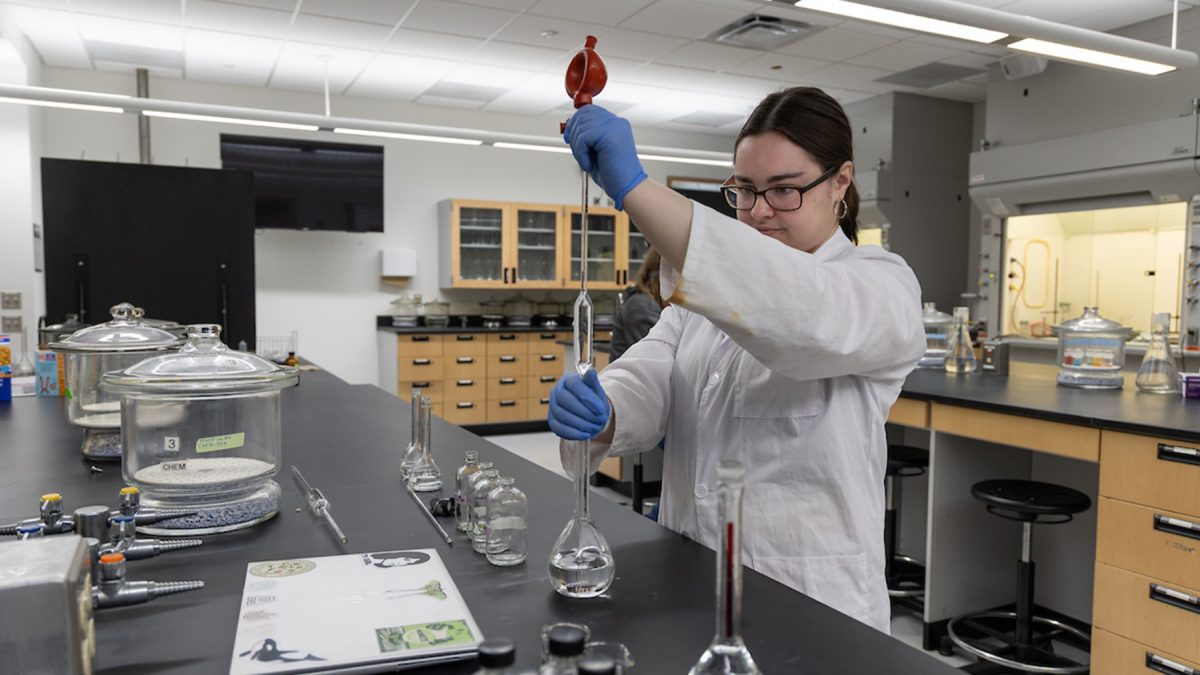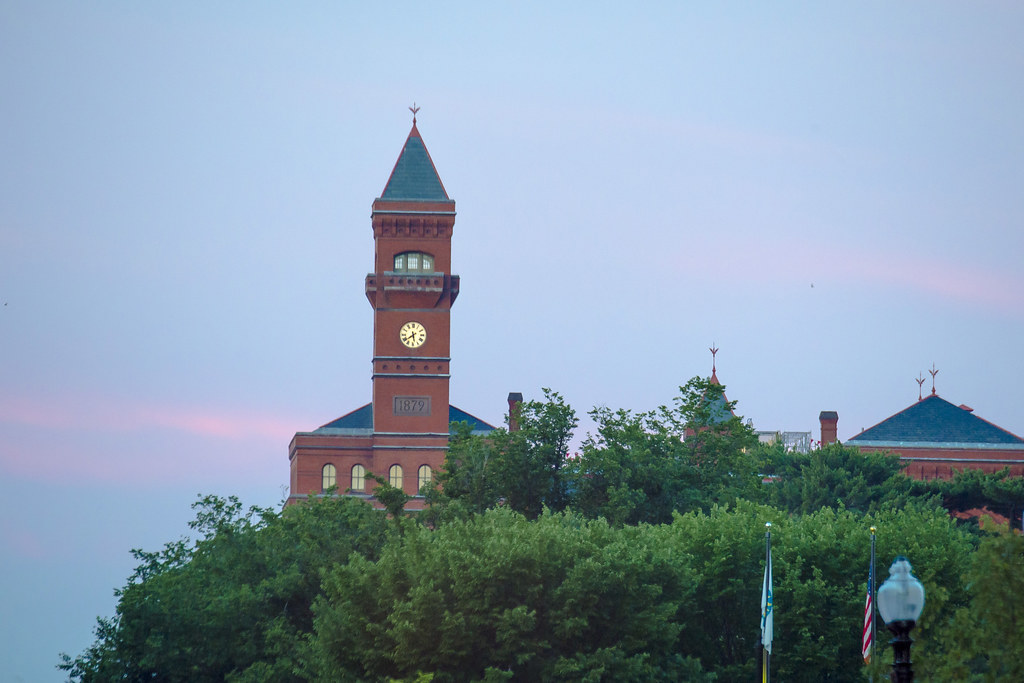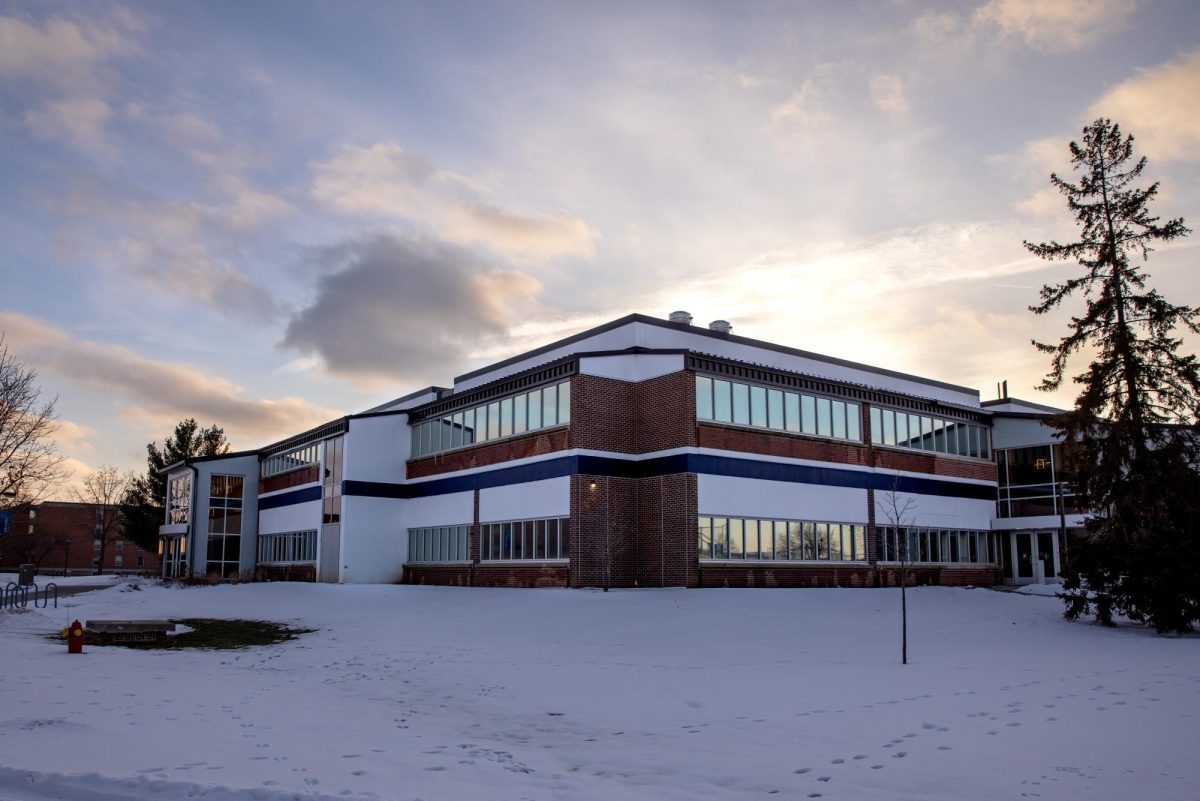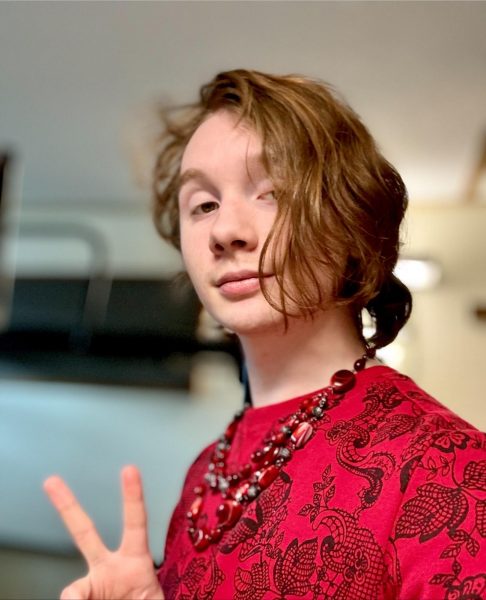Motion capture, or mo-cap for short, is well known for its use in just about every Hollywood movie these days. From Smaug in the Hobbit films to the cast of Na’vi in Avatar. Mo-cap has served as a cutting-edge entertainment technology used to bring larger than life characters to our screens… And one you can make use of on campus!
I decided to attend last Tuesday’s motion capture training session to get a rundown on one of (in my opinion) the most exciting and interesting places on campus. First, calibration is done with a fancy looking T-shaped wand dotted with lights, which gets waved around the space to give the cameras tracking data as a reference point. The cameras are looking for very bright objects, which in this case are the lights on the wand, but for tracking a person the cameras are looking at the reflective trackers (which are the classic white orbs you probably think of when picturing motion capture).
Each of the 8 cameras placed around the space have infrared lights which are reflected by the tracking beacons placed on the actor. The system then uses each camera’s point of view as data points to triangulate the position of the actor in 3D space. If you imagine cranking the contrast of an image to the point that only the brightest points are visible, that is what the tracking cameras are seeing. This allows them to avoid any visual noise and zero-in on what the trackers are doing.
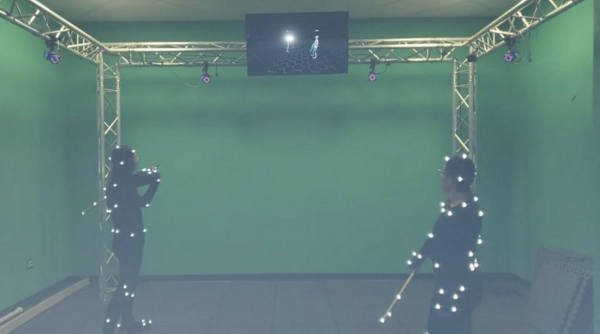
Finally, the setup process is completed by a process the supervisor of the motion capture space, Jesse Woodward, affectionately calls “motion capture yoga”. Which effectively is just a series of stretches to let the system get more data to work with.
When it comes to the more technical specs; the system has sub-millimeter precision and is able to run at over 200 frames per second. This is already a respectable number, but it becomes even more impressive when you realize that for each of those frames the cameras are tracking most of the 57 trackers placed on the actor, triangulating their position, placing those within an animation rig (also known as a “skeleton”), sending that to the computer, and finally turning it into a proper 3d output. All of this is happening more than 200 times every single second! This offers a level of detail and precision perfect for any project.
Speaking of, the space has been used for projects ranging from school to personal projects, capstone games, animation projects, and even an app that helps teach people ballroom dance moves. Beyond entertainment, the space is also planned to be used in conjunction with athletics and life sciences to look at how athletes move and correct any issues in form, leveraging its accuracy.
If you find all of this interesting and would like to reach out to make use of the motion capture lab. To quote Jesse “We’re open to anyone!”, so be sure to email them at [email protected]. And if you’re interested in attending a demonstration there’s one this Monday (Oct 6th at 7:00 p.m.) featuring the animation club teatime!
